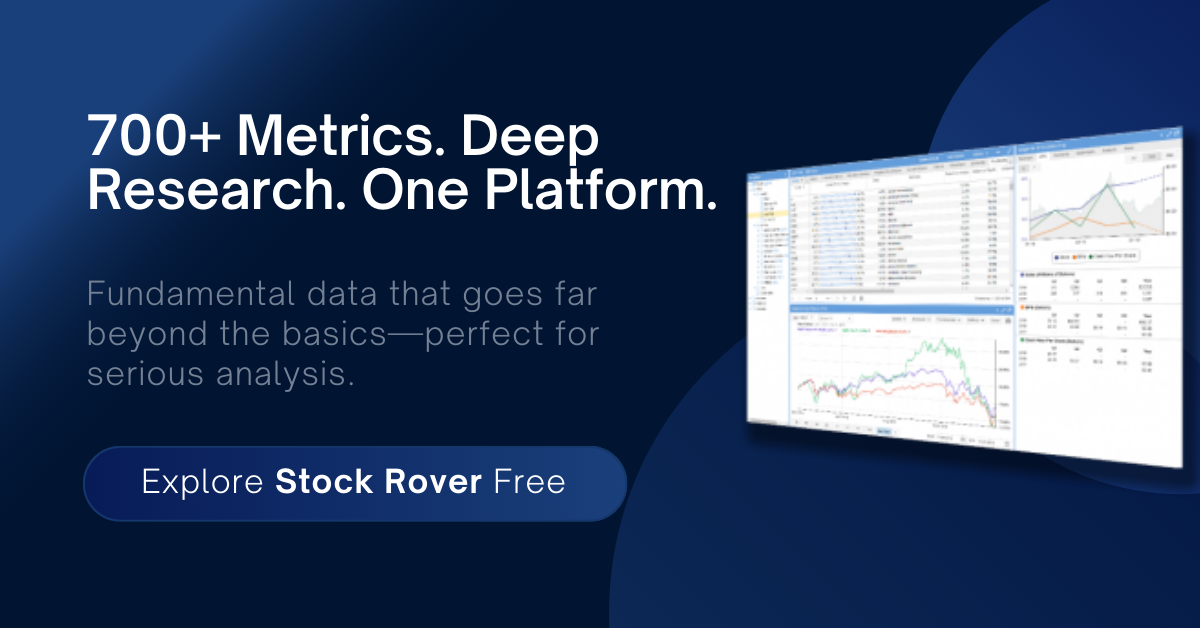
This isn’t just another financial metric — it’s the foundation of serious, lasting wealth creation. While financial media obsesses over earnings beats and Wall Street justifies inflated multiples, experienced investors know where to look: free cash flow. The Free Cash Flow Valuation Model is one of the most reliable, underutilized tools for assessing a company’s intrinsic worth. It cuts through hype and noise and exposes what the business is really generating — and what it can return to shareholders.
When you learn how to apply this model properly, you begin to think like an owner. You develop the discipline to tune out speculation and focus on fundamentals. This article lays out how to understand, build, and apply a free cash flow valuation model to uncover opportunities and avoid costly mistakes — just like Warren Buffett, who refers to FCF as “owner’s earnings.
Why Free Cash Flow Deserves Center Stage
Most investors focus on net income. Some expand to EBITDA or compare P/E ratios across sectors. But the real signal is in free cash flow — the cash left over after reinvestment, available to return to shareholders.
Free cash flow is the clearest picture of a business’s financial reality. It’s hard to manipulate. Unlike accounting profits, FCF shows what’s actually left to pay dividends, buy back shares, reduce debt, or fund growth. This is why Buffett prioritizes it. His “owner’s earnings” concept reflects FCF’s power: cash that can be taken out of the business without hurting its future.
The Core Formula: Free Cash Flow Valuation Model Made Simple
At its heart, the Free Cash Flow Valuation Model is a Discounted Cash Flow (DCF) analysis built on free cash flow instead of earnings. It answers a simple question: what is the business worth today, based on the cash it’s expected to generate in the future?
FCF Valuation = [FCF₁ / (1 + r)¹] + [FCF₂ / (1 + r)²] + … + [FCFₙ / (1 + r)ⁿ] + [TV / (1 + r)ⁿ]
Where:
- FCFₜ = Free Cash Flow in year t
- r = Discount rate (your required return or WACC)
- n = Number of forecast years
- TV = Terminal Value = FCFₙ₊₁ / (r – g), where g is the perpetual growth rate
This model values a business as the sum of its future free cash flows, discounted back to the present. Keep assumptions realistic. The goal is not to create precision, but clarity.
Should you add book value to FCF valuation? Generally, no. The Free Cash Flow Valuation Model already captures the ongoing value of a business through its future cash flows and terminal value. Adding book value separately can lead to double-counting, especially for businesses that are asset-light or already reflect asset value in their earnings power.
However, there are exceptions. If the business is capital-intensive and trades below liquidation value, or you’re valuing a net-net stock or asset play, then book value (or adjusted book value) may be worth layering in as a floor valuation. For most operating businesses though, the discounted value of future FCFs is sufficient.
Building the Model: What You Need to Do
To apply the model, forecast free cash flows for 5–10 years based on reasonable expectations. Don’t plug in rosy growth projections — think like a conservative business owner. Then estimate a terminal value based on long-term sustainable growth. Finally, discount everything back to today using your target rate of return.
How do you estimate future free cash flows in practice?
- Start with historical FCF: Look at the company’s past 3–5 years of free cash flow. This gives you a baseline and helps you identify growth trends or volatility.
- Understand the business model: Analyze what drives revenue, margins, capex, and working capital. Is the company capital-light? Does it operate in cyclical sectors or have recurring revenue?
- Project revenue growth: Use management guidance, industry data, and independent judgment to forecast annual revenue. Be conservative, especially beyond the next 2–3 years.
- Estimate operating margins: Apply a reasonable margin to forecast operating income. Deduct taxes to get NOPAT (Net Operating Profit After Tax).
- Subtract reinvestment needs: Deduct expected capital expenditures and changes in working capital to arrive at free cash flow.
- Forecast year-by-year: Build projections for each year in the forecast period, incorporating both base and scenario cases.
- Cross-check with peers: Validate your assumptions by comparing them with competitors and industry norms.
How many years should you forecast?
- For mature, stable businesses with predictable cash flows, a 5-year forecast is usually sufficient.
- For companies in earlier growth phases or with strong momentum, you might extend this to 7–10 years to capture their full earning potential.
- Capital-intensive or highly cyclical businesses often warrant shorter forecasts due to the increased uncertainty in longer-term projections.
After the explicit forecast period, calculate the terminal value to capture the business’s remaining value beyond the forecast window. This often represents the majority of the company’s present value, which is why conservative, realistic assumptions are key.
You can use WACC for a company-wide valuation or your own hurdle rate if you’re an equity investor. The model is flexible — you can adapt it to your risk tolerance and investment goals.
🧠 Classic Game. Artisan Craftsmanship. Pocket-Sized.
Hand Carved Wooden Triangle Peg Game – Mini Travel Edition
A thoughtful blend of old-school fun and sustainable design. This portable peg solitaire game is handcrafted from ethically sourced Indian rosewood and haldu wood, with hidden storage built right in.
- Hinged top opens to reveal peg storage inside
- Made from sustainable sheesham and haldu woods — no live trees harmed
- Hand carved by Indian artisans under fair trade standards
Timeless strategy in a travel-sized keepsake.
Real-World Example: What Wall Street Misses
Imagine you come across a small-cap industrial firm trading at 7x earnings. Capex has declined, and FCF has doubled over three years. Wall Street fixates on GAAP numbers, but your Free Cash Flow Valuation Model tells a different story — it’s trading at just 4x FCF.
Dig deeper. The company has low debt, steady buybacks, and growing cash balances. The business doesn’t just look cheap — it is cheap. And the market hasn’t noticed. This is how you find asymmetric opportunities where your downside is protected and your upside is significant.
Mistakes That Will Break Your Valuation
Like any tool, the model is only as good as how you use it. Avoid these common pitfalls:
- Inflated growth assumptions. Terminal value should not assume perpetual double-digit growth.
- Ignoring capital intensity. Some businesses require heavy reinvestment. FCF needs to be adjusted for this.
- Skipping the range check. Always test your model under multiple scenarios. Don’t rely on a single outcome.
A solid FCF valuation should feel conservative, not aggressive. If you’re surprised by how cheap something looks, double-check your assumptions before hitting “buy.”
How I Use FCF Valuation in My Portfolio
In my Premium Portfolio, free cash flow is a central filter. It feeds directly into my Kelly-based allocation model. I prioritize stocks where FCF is strong, consistent, and underappreciated. When I compare two ideas, the one with the stronger FCF profile usually wins.
I’ve held companies where FCF growth outpaced earnings — and when the market finally noticed, the rerating was fast. You don’t need the crowd to agree with you immediately. You just need to be directionally correct and patient enough to wait for the valuation gap to close.
Final Thoughts: Follow the Cash
Narratives change. Sentiment shifts. But free cash flow is durable. It’s the foundation of real value.
The Free Cash Flow Valuation Model helps you ignore the noise. It guides you to businesses that actually produce cash — businesses that can reward shareholders, reinvest intelligently, and survive downturns.
If you want to build wealth, own companies that mint cash. And if you want to own those companies at the right price, start using the free cash flow valuation model.
📘 Serious Research for Serious Investors
Astute Investor’s Calculus – Premium Membership
Unlock institutional-grade stock analysis, powerful portfolio strategies, and exclusive research trusted by disciplined value investors — all for a fraction of what the pros pay.
- Full access to all stock reports — before they’re released anywhere else
- Exclusive portfolio strategies, small-cap value with smart portfolio allocations
- Real-money research backed by 25+ years of investing experience
Build wealth with conviction, not noise.
👉 Join Premium – $197/month or $997/year

Shailesh Kumar, MBA is the founder of Astute Investor’s Calculus, where he shares high-conviction small-cap value ideas, stock reports, and investing strategies.
His work has been featured in the New York Times and profiled on Wikipedia. He previously ran Value Stock Guide, one of the earliest value investing platforms online.
Subscribe to the Inner Circle to access premium stock reports and strategy insights.
Featured in:








